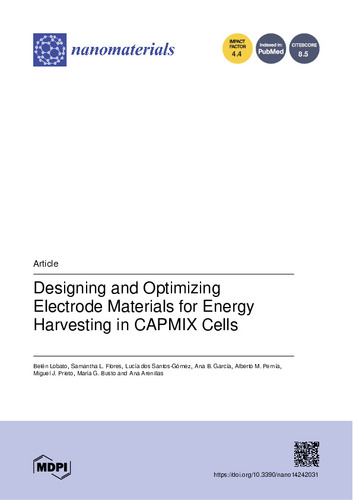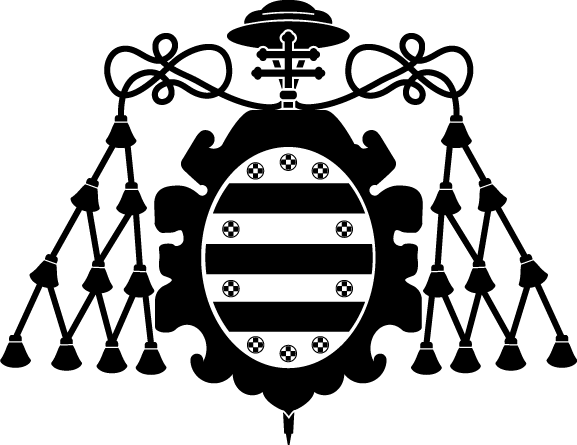Designing and Optimizing Electrode Materials for Energy Harvesting in CAPMIX Cells
Palabra(s) clave:
sol-gel synthesis
CAPMIX
carbon material
designed porosity
electrical conductivity
Fecha de publicación:
Editorial:
MDPI
Versión del editor:
Citación:
Resumen:
The growing demand for clean, decentralized energy has increased interest in blue energy, which generates power from water with different salt concentrations. Despite its potential as a renewable, low-cost energy source, optimizing electrode materials remains a challenge. This work presents a nanomaterial developed via microwave-assisted sol-gel methodology for blue energy applications, where ion diffusion and charge storage are critical. AX-7 carbon, designed for this study, features wide pores, enhancing ion diffusion. Compared to commercial NORIT carbon, AX-7 has a higher mesopore volume and external surface area, improving its overall performance. The synthesis process has been optimized and scaled up for evaluation in CAPMIX electrochemical cell stacks. Moreover, the lower series resistance (Rs) significantly boosts energy recovery, with AX-7 demonstrating superior performance. This advantage is especially evident during fresh-water cycles, where this material achieves significantly lower Rs compared to the commercial one.
The growing demand for clean, decentralized energy has increased interest in blue energy, which generates power from water with different salt concentrations. Despite its potential as a renewable, low-cost energy source, optimizing electrode materials remains a challenge. This work presents a nanomaterial developed via microwave-assisted sol-gel methodology for blue energy applications, where ion diffusion and charge storage are critical. AX-7 carbon, designed for this study, features wide pores, enhancing ion diffusion. Compared to commercial NORIT carbon, AX-7 has a higher mesopore volume and external surface area, improving its overall performance. The synthesis process has been optimized and scaled up for evaluation in CAPMIX electrochemical cell stacks. Moreover, the lower series resistance (Rs) significantly boosts energy recovery, with AX-7 demonstrating superior performance. This advantage is especially evident during fresh-water cycles, where this material achieves significantly lower Rs compared to the commercial one.
ISSN:
DOI:
Patrocinado por:
This research was funded by Ministerio de Ciencia e Innovación, Spain, and the European Union NextGeneration EU/PRTR and the Science, Technology and Innovation Plan 2018-2022 of the Principado de Asturias with the projects PID2019-110971RB-I00, and PID2020-113001RB-I00 MCIN/AEI-10.13039/501100011033 and GRUPIN2021 IDI/2021/50921. SLFL also thanks her PhD grant from Severo Ochoa Program of the Principado de Asturias.
Colecciones
Ficheros en el ítem





